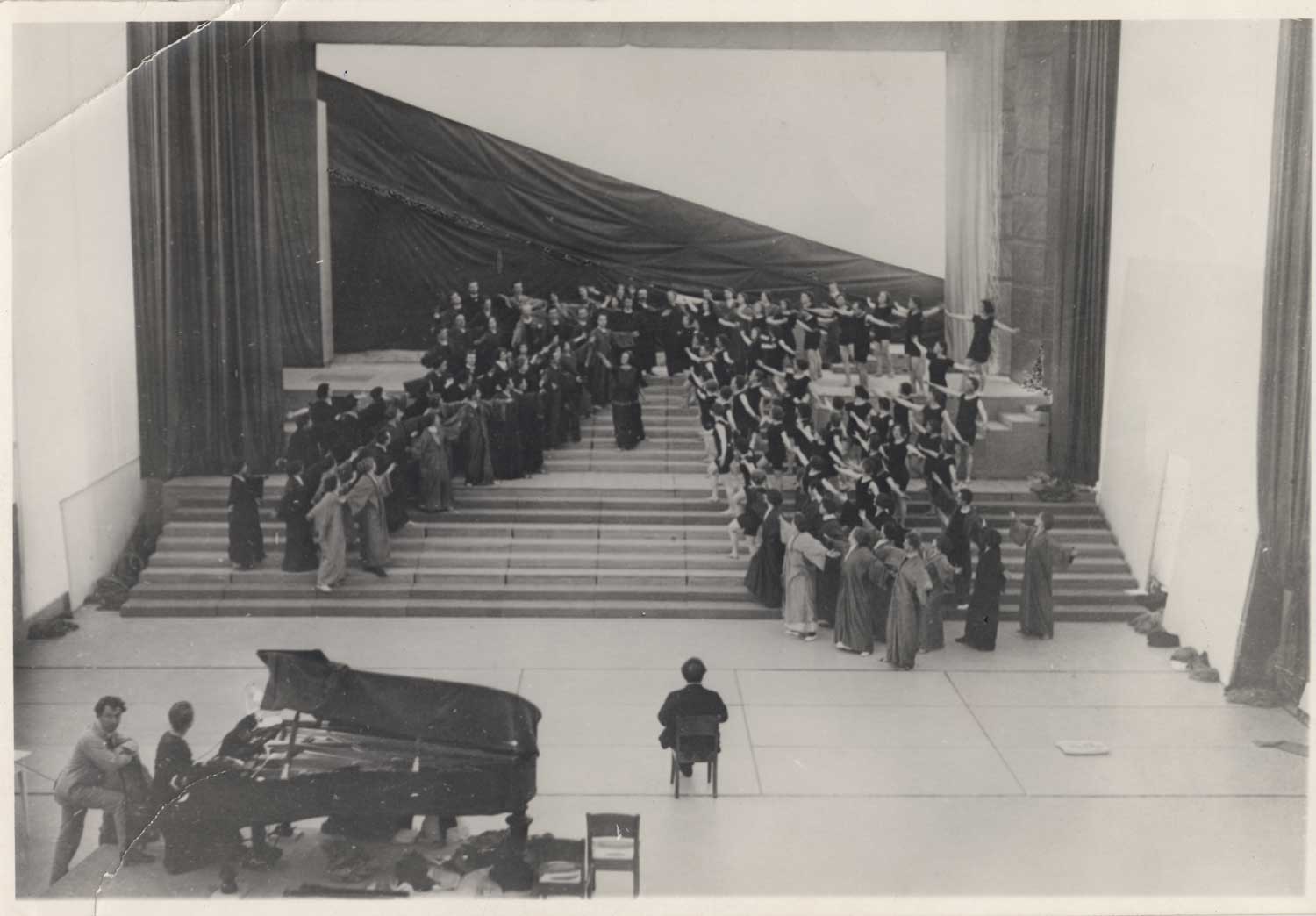Jaques-Dalcroze music school | Festival
After Wolf Dohrn brought the music teacher Emile Jaques-Dalcroze from Geneva to Hellerau, the garden city quickly became the centre of an internationally renowned European rhythmic movement. In a short time, the music school attracted a steadily growing number of students from home and abroad. The highlight of the academic year was the summer festival with large staged performances in front of an international audience. The First World War put an end to this development and burgeoning nationalism finally drove Dalcroze out of Hellerau.

Rehearsal for the performance of Orpheus and Eurydice by Christoph Willibald Gluck in the Great Hall, 1913.
Bibliothèque de Genève.
European rhythmic movement in Hellerau
Wolf Dohrn made Hellerau world famous in the years leading up to the outbreak of the First World War with the realisation of his ambitious plans to create an urban synthesis of the arts uniting work, life, and art. In the face of opposition from Schmidt and Riemerschmid, he pushed through the construction of the Festspielhaus (Festival Theatre) and in autumn 1910 brought the music teacher Emile Jaques-Dalcroze from Geneva to Hellerau, who set up his school for music and rhythm here. Dalcroze brought 46 students from Geneva for the first course in 1910/11 and by 1913/14, 495 young people from 15 nations were studying at the music school. As a result, the garden city quickly became the centre of an internationally renowned European rhythmic movement.
Short heyday and abrupt end
The highlight of the academic year was the summer festival, which only took place in 1912 and 1913 though. There were two reasons for this: firstly, the construction of the music school was not finished in 1911, and secondly, Emile Jaques-Dalcroze had returned to his home town of Geneva at the beginning of 1914 to organise the celebrations for the city’s centenary of being a member of the Swiss Confederation. Due to the outbreak of the First World War in the summer, he was unable to return to Hellerau. Jaques-Dalcroze also signed the Geneva Protest on the occasion of the shelling of Reims Cathedral by German troops. The nationalism that set in afterwards made his return to the garden city impossible, and within a few months the Dresden press turned the ‘highly revered and esteemed master’ into the ‘unloved, arrogant Swissman’.
Highlights of theatre history
Despite this tragic development, the four years during which the Jaques-Dalcroze music school existed were extremely successful. The number of students from home and abroad had grown steadily and the two-week school festivals at the end of the school year were also a great success. The staged performances of Orpheus and Eurydice by Christoph Willibald Gluck in July and the world premiere of Paul Claudel’s Annunciation in October 1913 attracted over 5,000 visitors. The performances attracted the most important representatives of the European avant-garde to the garden city and gave it the flair of a festival venue. Hellerau had thus transformed itself from a settlement designed in the spirit of the Lebensreform (life-reform) movement into a cultural site that was highly esteemed worldwide within just a few years.
